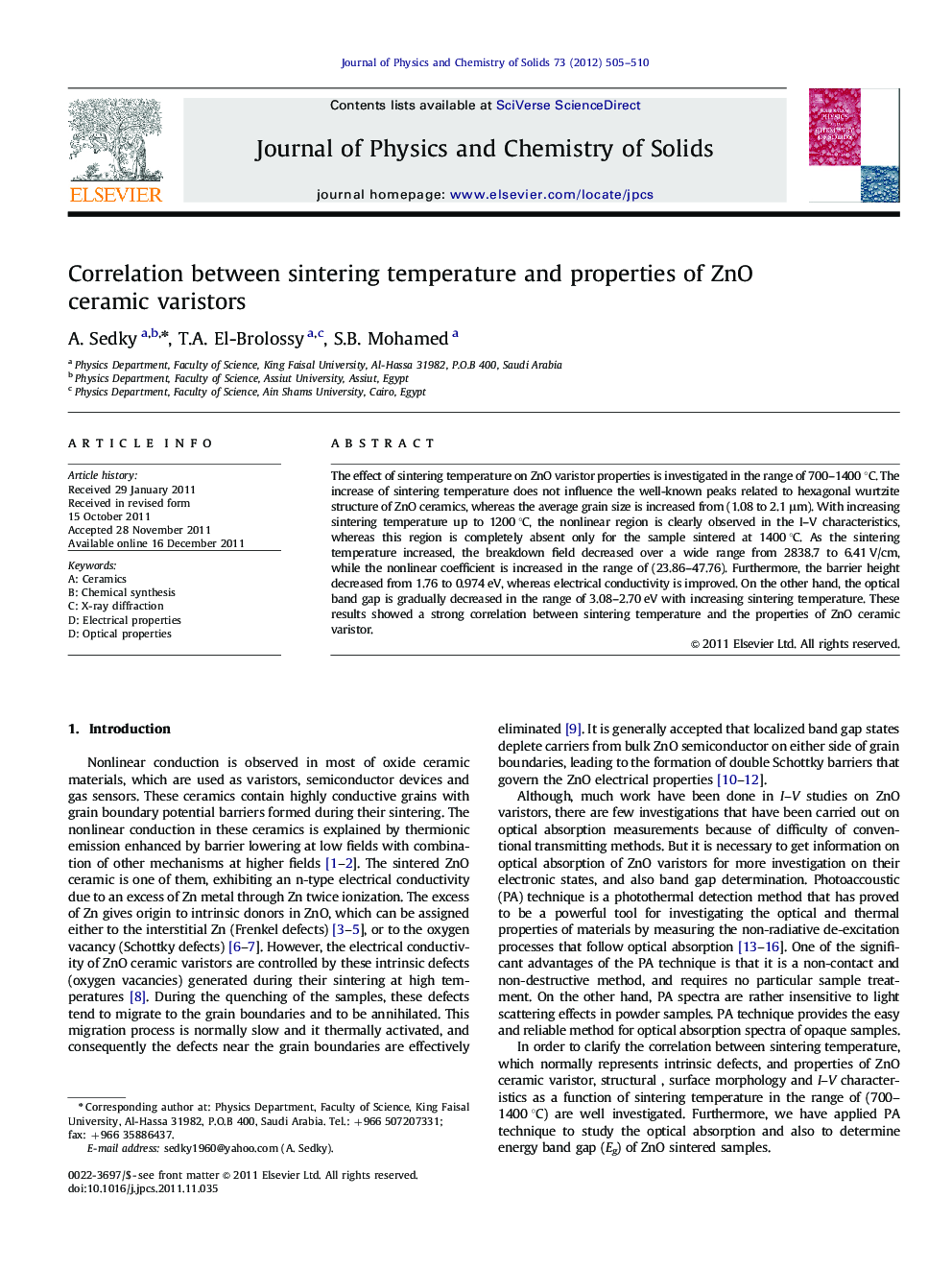| Article ID | Journal | Published Year | Pages | File Type |
|---|---|---|---|---|
| 1516611 | Journal of Physics and Chemistry of Solids | 2012 | 6 Pages |
The effect of sintering temperature on ZnO varistor properties is investigated in the range of 700–1400 °C. The increase of sintering temperature does not influence the well-known peaks related to hexagonal wurtzite structure of ZnO ceramics, whereas the average grain size is increased from (1.08 to 2.1 μm). With increasing sintering temperature up to 1200 °C, the nonlinear region is clearly observed in the I–V characteristics, whereas this region is completely absent only for the sample sintered at 1400 °C. As the sintering temperature increased, the breakdown field decreased over a wide range from 2838.7 to 6.41 V/cm, while the nonlinear coefficient is increased in the range of (23.86–47.76). Furthermore, the barrier height decreased from 1.76 to 0.974 eV, whereas electrical conductivity is improved. On the other hand, the optical band gap is gradually decreased in the range of 3.08–2.70 eV with increasing sintering temperature. These results showed a strong correlation between sintering temperature and the properties of ZnO ceramic varistor.
Graphical abstractWith sintering temperature in the temperature range of (700–1400 °C), we find that; the average grain size is increased from 1080–2100 nm. The non linear region is clearly observed up to 1200 °C, whereas this region is completely absent at 1400 °C, (see Fig. 1). The breakdown field is decreased from 2838.7 to 6.41 V/cm.The nonlinear coefficient is improved from 23.86 up to 47.76, °C. Furthermore, the electrical conductivities, over the range of the three considered regions of I–V curves, are improved.Figure optionsDownload full-size imageDownload as PowerPoint slideHighlights► Properties of ZnO against sintering temperature are analyzed. ► Grain size of ZnO is increased. ► Nonlinear coefficient is increased from 23.86 up to 47.76. ► Electrical conductivity could be improved. ► A correlation between them could be pointed.
